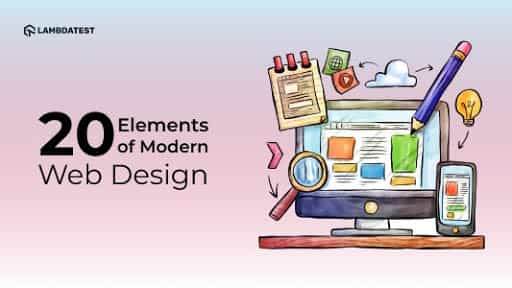All Categories
Featured
Table of Contents
- – Pueblo Web Design Tips and Tricks:
- – $899 - Custom Mobile Friendly Website Design ...
- – Web Design Projects - Behance Tips and Tricks:
- – What Is Web Design (And How Do I Get It Right...
- – What Is Web Design, How To Do It Right And Be...
- – Web Design Certificate - Web Development Cert...
- – Web Design Services + Website Development Ag...
- – Web Design Blog - Webdesigner Depot Webdesig...
- – Why Is Web Design Important? - 6 Reasons To ...
- – What Can I Do With A Web Design And Develop...
- – Web Design Services By Freelance Website De...
- – Powderkeg: Web Design Madison, Wi Tips and ...
- – Web Design - Linkedin Learning, Formerly Ly...
Pueblo Web Design Tips and Tricks:
Desktop apps require designers to produce their style and send it to an advancement group who can then transform the style to code. Typically, this is the standard for big and/or complicated websites because it enables the designer to focus on the general appearance and feel, while all the technical challenges are moved to the development team
$899 - Custom Mobile Friendly Website Design By Go Web ... Tips and Tricks:

Amazing styles can communicate a lot of details in just a few seconds. This is made possible with the usage of effective images and icons. A fast Google search for stock images and icons will create thousands of alternatives.
Web Design Projects - Behance Tips and Tricks:
Your website visitors have multiple ways of connecting with your website depending on their gadget (scrolling, clicking, typing, etc). The best site designs streamline these interactions to give the user the sense that they remain in control. Here are a couple of examples: Never auto-play audio or videos, Never ever underline text unless its clickable Make certain all kinds are mobile-friendlyAvoid appear Avoid scroll-jacking There are lots of web animation strategies that can assist your style grab visitor's attention, and allow your visitors to interact with your site by offering feedback.
What Is Web Design (And How Do I Get It Right)? - 99designs Tips and Tricks:
Your users should have the ability to quickly browse through your site without coming across any structural problems. If users are getting lost while trying to navigate through your website, possibilities are "crawlers" are too. A crawler (or bot) is an automated program that explores your site and can identify its functionality.
What Is Web Design, How To Do It Right And Best Skills - Rock ... Tips and Tricks:
Responsive, Understanding the pros and cons of adaptive and responsive sites will assist you determine which website builder will work best for your website style requirements. You might come throughout posts online that discuss a whole bunch of various website design styles (repaired, fixed, fluid, and so on). Nevertheless, in today's mobile-centric world, there are only 2 website styles to utilize to correctly develop a website: adaptive and responsive.
Web Design Certificate - Web Development Certificate Program Tips and Tricks:

a header) is 25% of its container, that element will remain at 25% no matter the modification in screen size. Responsive sites can also use breakpoints to create a custom take a look at every screen size, but unlike adaptive sites that adjust only when they struck a breakpoint, responsive websites are constantly altering according to the screen size.(image credit: UX Alpaca)Terrific experience at every screen size, despite the gadget type, Responsive site contractors are generally stiff which makes the style tough to "break"Lots of readily available templates to start from, Requires extensive style and testing to make sure quality (when starting from scratch)Without accessing the code, customized designs can be challenging, It is necessary to note that site contractors can consist of both adaptive and responsive functions.
Web Design Services + Website Development Agency Tips and Tricks:
Wix has actually been around because 2006 and has given that established a wide variety of functions and templates to fit almost every service need. Today, it's thought about among the simplest tools for novices. It's difficult to pick a winner in this category, here are few things to keep in mind: If you're looking for the most adjustable experience, choose Page, Cloud.
Web Design Blog - Webdesigner Depot Webdesigner Depot Tips and Tricks:
This is where more intricate web design tools, like Webflow and Froont, enter into play. Here are some of the advantages and disadvantages to consider when looking to adopt among these tools: Ability to produce custom responsive websites without having to write code Unequaled control over every element on the page Capability to export code to host somewhere else Complex tools with high knowing curves Slower style procedure than adaptive site builders, E-commerce sites are a vital part of website style.
Why Is Web Design Important? - 6 Reasons To Invest In Site ... Tips and Tricks:

The basic 5 components of web design, Finest resources to learn web design at house, What is web style? You need to keep your style simple, tidy and accessible, and at the same time, use grid-based designs to keep design products organized and orderly, thus producing a great total design. Web design online courses.
What Can I Do With A Web Design And Development Degree? Tips and Tricks:
, The web design track style Tree, House offers Home uses of video and interactive lessons on HTML, CSS, layouts, and other web design basics.
Web Design Services By Freelance Website Designers - Fiverr Tips and Tricks:
Efficient web design brings a couple of various components together to promote conversions. These include: Engaging usage of negative area Plainly provided choices for the user(the less choices the user has, the less most likely they are to end up being overloaded and confused)Apparent, clear calls to action Restricted diversions and a well considered user journey (ie.
Powderkeg: Web Design Madison, Wi Tips and Tricks:
Here are some examples: Clear calls to action are fantastic website design; dirty ones are bad website design. High contrast fonts are smart, reliable web style; low contrast fonts that are difficult to check out are poor web style. Here are a couple of other elements to avoid: Distracting images and backgrounds. There are a couple of choose circumstances where a tiled background could be a great option, in many cases they're distracting. Non-responsive design. Nowadays your site merely requires to be mobile responsive. Uncertain links and buttons. Visitors should not have to hunt for links and buttons, they should have the ability to rapidly see which images and pieces of text will take them to brand-new pages or verify their options.
Web Design - Linkedin Learning, Formerly Lynda.com Tips and Tricks:
On a platform like 99designs you can host a style contestby providing a supplying and having designers submit designs send on your specifications. Your web style might cost a few hundred to tens of thousands of dollars, depending on its complexity. The more information they have, the more equipped they are to deliver the best web design for you.
Learn more about Lovell Media Group LLC or TrainACETable of Contents
- – Pueblo Web Design Tips and Tricks:
- – $899 - Custom Mobile Friendly Website Design ...
- – Web Design Projects - Behance Tips and Tricks:
- – What Is Web Design (And How Do I Get It Right...
- – What Is Web Design, How To Do It Right And Be...
- – Web Design Certificate - Web Development Cert...
- – Web Design Services + Website Development Ag...
- – Web Design Blog - Webdesigner Depot Webdesig...
- – Why Is Web Design Important? - 6 Reasons To ...
- – What Can I Do With A Web Design And Develop...
- – Web Design Services By Freelance Website De...
- – Powderkeg: Web Design Madison, Wi Tips and ...
- – Web Design - Linkedin Learning, Formerly Ly...
Latest Posts
Web Design Museum 1991 – 2006 Tips and Tricks:
Web Design Services - Verizon Small Business Essentials Tips and Tricks:
Web Design Services - Networksolutions.com Tips and Tricks:
More
Latest Posts
Web Design Museum 1991 – 2006 Tips and Tricks:
Web Design Services - Verizon Small Business Essentials Tips and Tricks:
Web Design Services - Networksolutions.com Tips and Tricks: